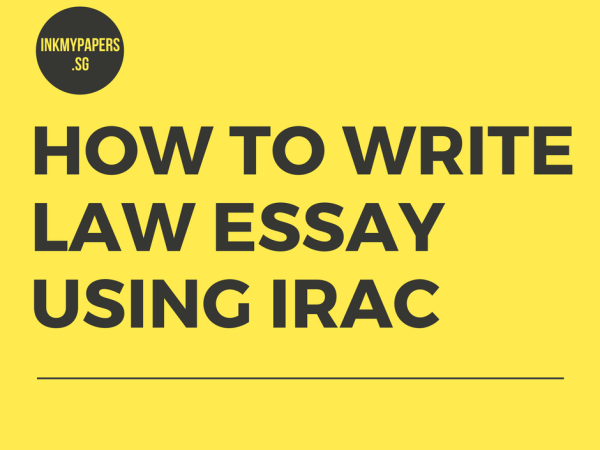Writing argumentative essays is one of the most common requirements most students encounter in school, however sometimes it may be hard to write therefore, an argumentative essay format to guide you can come in handy.
Writing argumentative essays requires certain standards to reflect a student’s critical thinking on a given topic.
So here I will provide you the best argumentative essay guide, which gives you the important things you need to know about writing argumentative essays.
First, what is an argumentative essay?
Argumentative essay is an essay wherein arguments are presented, usually both arguments for and against a given topic. In this type of essay, usually, a stand on the topic is provided and also counterarguments.
WAIT! You may want to click on other helpful blog articles below!
5 Tips to Improve Critical Thinking Skills in Academic Writing
Writing Academic Essay: Here are 4 Easy Steps
Here’s the general argumentative essay format or argumentative essay outline:
Introduction
Although most students think introduction is the easiest part of writing argumentative essays, there are still some who fail to write introductions correctly. So…
Do not commit these common mistakes when writing introductions:
- Fail to write introduction entirely.
- Write too much background or historical information.
- Write the introduction too long and with too much and unnecessary information.
While this is the correct content of introduction:
- Include general topic and background information.
- Introduce the focus of the topic.
- Problematise the focus of the essay.
- Mention the objective and outline of the essay.
- Pro tip: Introduction should only comprise 8-10% of the total length of your essay.
Body
Always include topic sentences which indicate the main idea of your paragraph.
Tip: Topic sentences most often contain signposting words or phrases that allow the current paragraph to transition well from the previous paragraph.
Example of signposting words or phrases: on the other hand, however, consequently
Not only that, your topic sentence should be followed by supporting information in order to elaborate your topic sentence. These information should contain details, facts, reasons, incidents and evidence that support your topic sentence.
Conclusion
Tips on how to write conclusion correctly:
- Don’t introduce any new ideas or information. Hence, conclusion should NOT contain citations.
- Write the summary with major points only.
- Pro tip: conclusion should only be 10-12% of your total paper’s length.
Here are 30 argumentative essay sample instructions and how to answer them:
Account for
Explain the reason for or cause for something.
Analyse
Break an issue into its constituent parts. Look in depth at each part using supporting arguments and evidence for and against as well as how these interrelate to one another.
Asses
Weigh up to what extent something is true. Persuade the reader of your argument by citing relevant research but also remember to point out any flaws and counterarguments as well. Conclude by stating clearly how far you are in agreement with the original proposition.
Clarify
Literally make something clearer and, where appropriate, simplify it. This could involve, for example, explaining in simpler terms a complex process or theory, or the relationship between two variables.
Comment upon
Pick out the main points on a subject and give your opinion, reinforcing your point of view using logic and reference to relevant evidence, including any wider reading you have done.
Compare
Identify the similarities and differences between two or more phenomena. Say if any of the shared similarities or differences are more important than others. ‘Compare’ and ‘contrast’ will often feature together in an essay question.
Contrast
Similar to compare but concentrate on the dissimilarities between two or more phenomena, or what sets them apart. Point out any differences which are particularly significant.
Consider
Say what you think and have observed about something. Back up your comments using appropriate evidence from external sources, or your own experience. Include any views which are contrary to your own and how they relate to what you originally thought.
Critically evaluate
Give your verdict as to what extent a statement or findings within a piece of research are true, or to what extent you agree with them. Provide evidence taken from a wide range of sources which both agree with and contradict an argument. Come to a final conclusion, basing your decision on what you judge to be the most important factors and justify how you have made your choice.
Define
To give in precise terms the meaning of something. Bring to attention any problems posed with the definition and different interpretations that may exist.
Determine
Conclude through examination of evidence.
Demonstrate
This is to simply show how and also provide examples to illustrate.
Describe
Provide a detailed explanation as to how and why something happens.
Discuss
Essentially this is a written debate where you are using your skill at reasoning, backed up by carefully selected evidence to make a case for and against an argument, or point out the advantages and disadvantages of a given context. Remember to arrive at a conclusion.
Elaborate
Write about a statement or a quotation that is part of the question; explain the statement or quotation in more detail and then state you point of view.
Evaluate
See the explanation for ‘critically evaluate’.
Examine
Look in close detail and establish the key facts and important issues surrounding a topic. This should be a critical evaluation and you should try and offer reasons as to why the facts and issues you have identified are the most important, as well as explain the different ways they could be construed.
Explain
Clarify a topic by giving a detailed account as to how and why it occurs, or what is meant by the use of this term in a particular context. Your writing should have clarity so that complex procedures or sequences of events can be understood, defining key terms where appropriate, and be substantiated with relevant research.
Explore
Adopt a questioning approach and consider a variety of different viewpoints. Where possible reconcile opposing views by presenting a final line of argument.
Give an account of
Means give a detailed description of something. Not to be confused with ‘account for’ which asks you not only what, but why something happened.
Identify
Determine what are the key points to be addressed and implications thereof.
Illustrate
A similar instruction to ‘explain’ whereby you are asked to show the workings of something, making use of definite examples and statistics if appropriate to add weight to your explanation.
Interpret
Demonstrate your understanding of an issue or topic. This can be the use of particular terminology by an author, or what the findings from a piece of research suggest to you. In the latter instance, comment on any significant patterns and causal relationships.
Justify
Make a case by providing a body of evidence to support your ideas and points of view. In order to present a balanced argument, consider opinions which may run contrary to your own before stating your conclusion.
Outline
Convey the main points placing emphasis on global structures and interrelationships rather than minute detail.
Review
Look thoroughly into a subject. This should be a critical assessment and not merely descriptive.
Show how
Present, in a logical order, and with reference to relevant evidence the stages and combination of factors that give rise to something.
State
To specify in clear terms the key aspects pertaining to a topic without being overly descriptive. Refer to evidence and examples where appropriate.
Summarise
Give a condensed version drawing out the main facts and omit superfluous information. Brief or general examples will normally suffice for this kind of answer.
To what extent
Evokes a similar response to questions containing ‘How far…’. This type of question calls for a thorough assessment of the evidence in presenting your argument. Explore alternative explanations where they exist.
There’s more! Here are important and useful rules in writing argumentative essays:
- Not written in 1st person view (unless otherwise stated).
- No shortened forms and superlatives (e.g. he’s, she’s, super, very, great, best, most, tidiest).
- No casual words and phrases (e.g. In a nutshell, end of the day, tough nut to crack, finding nail in a haystack).
- No direct quotation unless for specific details. Even then, direct quotation should be less than 10 words.
- Avoid strongly worded opinions (e.g. Very, extremely, really, drastic).
- Avoid brackets unless it is for referencing or acronyms.
- No spelling mistakes.
- No grammar mistakes (no green underline mistakes).
- Use simple, straightforward language.
There you go! Remember to follow the general argumentative assay format and outline I provided, the guide on how to answer respective argumentative essay instructions, and the important argumentative essay writing rules!
Feel free to comment below and share to your friends on social media!
1 Comment
Pingbacks
-
[…] we do have an article about this to help those of us who are a little less academically inclined, here are some writing tips from […]
[…] we do have an article about this to help those of us who are a little less academically inclined, here are some writing tips from […]






